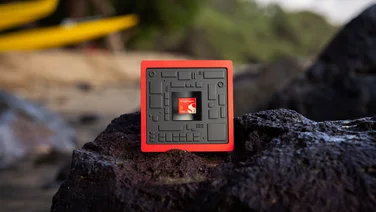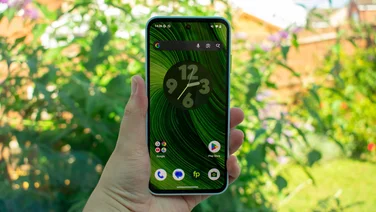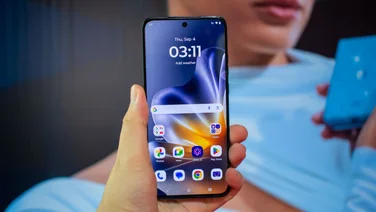To help us provide you with free impartial advice, we may earn a commission if you buy through links on our site. Learn more
- Huawei Mate 10 Pro review
- Huawei Mate 10 review: What you need to know
- Huawei Mate 10 review: Price and competition
- Best Huawei Mate 10 contract and SIM-free deals
- Huawei Mate 10 review: Design, specifications and first impressions
- Huawei Mate 10 and Mate 10 Pro review: Screen quality
- Huawei Mate 10 and Mate 10 Pro review: Performance
- Huawei Mate 10 and Mate 10 Pro review: Software
- Huawei Mate 10 and Mate 10 Pro review: Cameras
- Huawei Mate 10 and Mate 10 Pro review: Verdict






















- Attractive design
- Great battery life
- Excellent camera
- No 3.5mm headphone jack (on the Pro)
Following the recent news that Google is restricting Android access to Huawei and Honor devices worldwide, we regrettably can’t recommend the Huawei Mate 10 and Mate 10 Pro. Though they are an excellent pair of handsets and Huawei has said that existing devices will receive security updates, it is still not clear how this development might otherwise affect Huawei devices. For as long as the ban is in place, then, we’d recommend refraining from buying both phones.
Since the ban, however, Huawei has revealed that it will be bringing the Android Q update to the Mate 10 Pro, in addition to “popular current devices”, despite the ongoing trade ban. There’s no word yet on when this update might drop, but you can see the full list of Huawei phones that are set to receive the Android Q upgrade in our dedicated Huawei ban article.
Our original Huawei Mate 10 Pro review continues below.
Huawei Mate 10 Pro review
When Samsung pulled the plus-sized Note 7 from shelves last year, it left a phablet-sized hole, ready for rivals to jump into. It was a chasm that Huawei’s Mate 9 manfully attempted to fill with the Mate 9, but that phone just fell short. This year, it’s the turn of the Huawei Mate 10, but circumstances have changed.
READ NEXT: The best smartphones of 2017 (so far)
This year the Samsung Galaxy Note 8 is back (and steadfastly refusing to blow up in people’s faces), and there’s a raft of other big new big-screened competitors to contend with, including the 6in Google Pixel 2 XL.
Huawei Mate 10 review: What you need to know
Confusingly, there are two Huawei Mate 10 models and both are closely related. Each employs Huawei’s latest flagship processor – the Kirin 970 – and they’re similar in look and feel with a glossy metallic glass back and a slightly different coloured strip highlighting dual cameras on the rear.
Both have the same camera setup, too. There’s a pair of Leica-branded f/1.6 cameras on the back: one is a 12-megapixel RGB unit; the other is a 20-megapixel monochrome camera.
There are differences but they are subtle. The Mate 10 has a regular 16:9 aspect ratio IPS display, which runs at a resolution of 1,440 x 2,560, while the Huawei Mate 10 Pro has a 6in 18:9 AMOLED screen at a resolution of 1,080 x 2,160, so it’s slightly narrower and slightly taller. There’s also a distinction in the positioning of the fingerprint reader, with the sensor on the front of the 10 and the rear of the Pro, while the Mate 10 retains its 3.5mm headphone jack and the Pro does not.






















^ The Mate 10 Pro has the fingerprint reader on the rear…






















^ …while the Mate 10’s fingerprint reader is on the front
Another difference is that the Pro is rated as being both dust- and water-resistant to IP67 where the Mate 10 is not. The Porsche Design version of the Mate 10 is also making a comeback later this year, but that version is ludicrously expensive, costing more even than an iPhone X at €1,395. There’s no UK pricing for that yet, though.
Huawei Mate 10 review: Price and competition
The regular Mate 10 and Mate 10 Pro, however, are priced at a refreshingly low level. While most big-screened flagships have been pegged at £700 or more in recent times, the Mate 10 will cost £519, while the Pro will set you back £699.
Given the small differences between the two handsets, that makes the Mate 10, if not the Mate 10 Pro, something of a big-screened bargain although it’s the Mate 10 Pro that’s first being made available in the UK. Still, it’s a pretty attractive price for a smartphone this powerful, attractive and packed with features, especially when the Samsung Galaxy Note 8 is £80 more expensive.
Best Huawei Mate 10 contract and SIM-free deals
Huawei Mate 10 review: Design, specifications and first impressions
Both phones are good-looking handsets. They’re available in a variety of colours, but it so happens that the review units sent to me were both finished in “Mocha Brown”. Before you wrinkle your nose in disgust, though – bear with me – it’s more of a burnished bronze and it looks great.
Other colours for the Pro include midnight blue, titanium gray and pink gold, while the regular Mate 10 is available in champagne gold, pink gold, and bog-standard black.
Both phones look great from the front, with barely-there bezels to the left and right of the display and very slim bezels at the top and bottom. Flip it over, and they’re just as smart. There’s the usual dual camera arrangement with both cameras sitting at the top within a slightly textured darker-coloured band and glass across the entire expanse, with curves at the sides. If last year’s Mate 9 was a bit of a looker, this year’s is a supermodel, although watch where you put the phone down; the edges of the slightly protruding camera modules are so sharp they’ll scratch delicate surfaces.

^ The Mate 10 pro lacks a 3.5mm headphone jack but the Mate 10 – confusingly – does have one
Both the power and volume rocker keys sit on the right-edge of the phone, while the dual microSD (which supports cards up to 256GB in size) and nano-SIM tray is on the top. On the bottom, you’ll find a solitary speaker grille and USB Type-C port for charging. Alas, in a depressing development that looks to be spreading throughout the industry, there’s no 3.5mm headphone jack on the Pro model, though thankfully the regular model keeps it for another year.

Huawei Mate 10 and Mate 10 Pro review: Screen quality
The biggest point of divergence between these two handsets is the screen but, on both counts, it’s a similar story. Both are sharp enough that you won’t be able to see the pixels, but the OLED screen is my favourite purely because of its size and shape and superb contrast.
But technically, neither display is the best in the world. The Pro’s OLED display covers 98.7% of the sRGB colour gamut in normal mode but isn’t very colour accurate. You can choose “vivid” if you like, but it’s a little over-vibrant for my tastes. The regular Mate 10 covers less of the sRGB colour gamut at 92.2% and also isn’t very colour accurate.
The displays on both phones are bright enough to be readable in all conditions, though. The Pro peaks at an impressive 727cd/m2 with a small patch of white displayed against a black background, and 570cd/m2 when the screen is filled with white, though beware, it only hits these heights in auto-brightness mode. Switch to manual and you’ll get peak brightness of below 400cd/m2. The Mate 10 is slightly less impressive in this regard, peaking at 538cd/m2 in auto-brightness mode and below 300cd/m2 in manual mode. The Mate 10 should nonetheless still be readable in most conditions if left in auto-brightness mode.






















^ The Mate 10’s display (pictured here) is vibrant, but the OLED screen on the Mate Pro is bettter
Huawei Mate 10 and Mate 10 Pro review: Performance
On the inside, the Mate 10 and Mate 10 Pro are the first devices to be powered by Huawei’s own octa-core 2.36GHz Kirin 970 chip backed by 4GB of RAM and 64GB of storage. In the case of the Mate 10 Pro, a 64GB/128GB option also available.
The chip itself is also the first, says Huawei, to have an integrated hardware AI element – the so-called neural processing unit – designed to speed up tasks such as intelligent photo analysis and language translation.
You can see this in action in the camera app, which does live scene analysis on-device, recognising things like people, food and scenery, tweaking camera settings on the fly.
Otherwise, the Kirin 970 lends both the Mate 10 and Mate 10 Pro a fair turn of speed. General UI operations feel fluid and responsive – perhaps not as snappy as on the Google Pixel 2 and Pixel 2 XL, or as fluid as the Razer Phone – but quick enough for most people.


In the benchmarks both phones performed similarly, which is to say, they’re pretty darned quick. The higher resolution of the Mate 10’s display impacts framerates in the onscreen GFXBench tests, but either phone will be able to play the most intense games the Google Play Store can throw at them without breaking a sweat.
It’s battery life that’s the real strength of these phones, though. I’ve been using the Mate 10 Pro for about two weeks now and it regularly gets me through a full two days of light use, with an average usage time per charge of over one-and-a-half days.
In our video playback test, performance isn’t quite as impressive. Its huge 4,000mAh battery lasting 14hrs 52mins, so there’s clearly some kind of heavy optimisation going on behind the scenes. But, frankly, I don’t care what the phone is doing if it lasts this long. It’s the longest-lasting flagship phone I’ve used for quite some time.
Huawei Mate 10 and Mate 10 Pro review: Software
The phone also runs the latest version of Android Oreo, although you won’t see much of it as it’s slathered with a thick layer of custom manufacturer launcher software, in this case, Huawei’s Emotion UI 8 (EMUI).
EMUI certainly divides opinion, but one thing you can’t deny is that it packs in the features. Thanks to the phone’s new neural processing unit, the camera has more advanced scene recognition than ever before, and there’s a new DeX-like feature that will let you run a desktop-like environment when you connect the phone to a monitor.
Unlike Samsung’s version of the system, though, the Huawei Mate 10 requires only a USB Type-C cable to work and doesn’t need a pricey docking station. It works reasonably well, too, and you can use the screen of the phone as a touchpad, saving on the kit you need to carry around with you. However, it comes across a lot less polished than the Samsung version. In particular, many of the apps I had installed on the phone simply didn’t show up in the desktop mode’s start menu and couldn’t be launched.

Huawei Mate 10 and Mate 10 Pro review: Cameras
As for photography, the Mate 10 is equipped with a pair of wide f/1.6 aperture rear-facing cameras, complete with Leica branding, optical image stabilisation (OIS), phase detect and laser autofocus and a dual-LED flash. And it’s exactly the same camera across both models of phone.






















The main 12-megapixel camera utilises an RGB sensor, while the secondary camera uses a 20-megapixel, monochrome-only sensor, which helps to capture finer details. The end result is a camera that’s a brilliant performer but one that can’t quite match the best in the business; that’s the Google Pixel 2, in case you were wondering.
In good light, the Mate 10’s shots are excellent. There’s loads and loads of detail, images are well exposed and colours are both accurate and well saturated. It’s slightly annoying that you have to enable a separate HDR mode to enable the feature – there’s no HDR shortcut on screen so you can switch it on while in other modes – and that there’s no auto HDR facility either.






















^ The Pixel 2 shot is on the left and the Huawei Mate 10 Pro shot on the right. Click through to the gallery to enlarge
Plus, if you look really hard, the phone is slightly overexposing images and over-processing them as well; this leads to a loss of fine detail, even compared with the much lower-resolution Pixel 2. Black and white photography is great, though: images are brimming with impact and oodles of detail.
In low light and for video it’s a similar story. Our still life test showed that, if anything, the wide f/1.6 aperture on the Mate 10 and Mate 10 Pro help them to produce more pleasing images than the Pixel 2. No mean feat considering that’s the best smartphone camera on the market.
However, there are a couple of fairly major caveats. Generally, I found the camera wasn’t quite as reliable at capturing the images I wanted as the Pixel 2, both in good light and bad; scenes just didn’t come out as I expected them to. And video capture at 4K, though slightly more colour accurate than that produced by the Pixel 2, isn’t stabilised and looks horribly shaky when shot handheld.
Huawei Mate 10 and Mate 10 Pro review: Verdict
Of the two new Huawei Phones, it’s the Mate 10 Pro that I prefer. It’s the shape more than anything else, but also the peace of mind it gives you knowing that there’s a modicum of waterproofing on offer and the superior quality screen. If you’re thinking of buying either of these phones, the Pro is definitely the one you want.
The question is, is it good enough to unseat Samsung at the top of the all-screen smartphone tree? In my opinion, not quite but the Huawei Mate 10 Pro is close enough to warrant a wholehearted recommendation. It’s certainly a better all-round phone than the Google Pixel 2, by dint of it not having a horrible display, a generally great camera, storage expansion and superb two-day battery life. And, although the screen isn’t as competent as the Note 8’s or the S8 Plus’, the Huawei Mate 10 Pro has better real-world stamina and an attractive price of £699.
Whatever your priorities, though, you’ll find the Mate 10 Pro a competitive, competent smartphone that’s been put together with a huge amount of care and attention. It’s a very good smartphone indeed, and well worth a Best Buy award.








